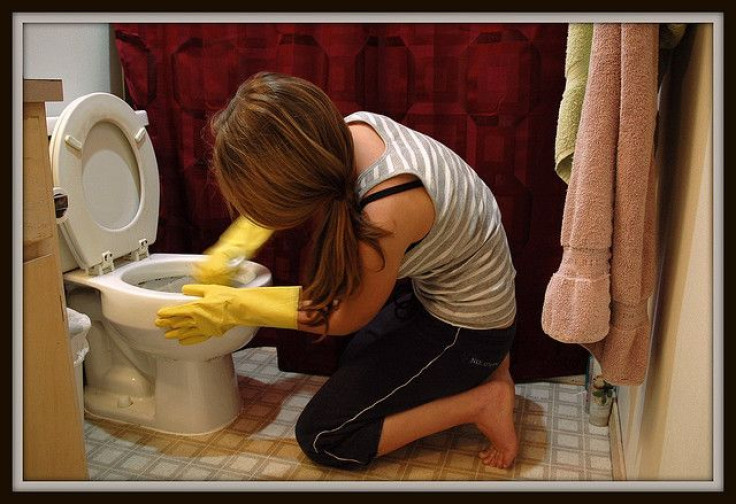Antimicrobial Cleaning Products Contain Chemicals That Weaken Fertility In Mice

Cleaning spray ingredients make mice less fertile, say Virginia Tech University researchers, suggesting the chemical compounds commonly found in kitchen and bathroom spray products might have negative effects on humans.
“Quaternary ammonium compounds (QACs) are antimicrobial agents commonly found in cleaning solutions used in residential, commercial, and medical settings,” explained the research team, led by Dr. Terry Hrubec, senior author of the study and associate professor of anatomy and embryology.
With their ability to kill microorganisms, QACs are used in many cleaning products, including brands like Lysol and Clorox, but also in Simple Green — a product making claims to environmental safety. These chemical compounds have also been added to algaecides for swimming pools, lumber treatments, and anti-static laundry products. They are also used to preserve cosmetics, ophthalmic solutions, nasal sprays, shampoo, and baby wipes. This variety of uses suggests human exposure to QACs is widespread (though, as of yet, no study has monitored this).
Prevalent in consumer and industrial products, well-documented examples of QAC toxicity exist, say the authors. However, the various reports of corneal cytotoxicity, allergic rhinitis, contact dermatitis, and occupational asthma have not destroyed the perception that QACs are relatively safe.
But are they?
Safety Tests on Mice
One study performed by Hrubec and colleagues last December revealed mice exposed to QACs took longer to get pregnant, had fewer pregnancies, and gave birth to smaller litters. For the current study, then, the research team sought to clarify any gender-specific problems. The team exposed both male and female mice to two QACs through their water supply and then extensively tested the rodents.
The exposed female mice had reduced ovulation and spent less time in “heat” (the period of peak fertility), the researchers discovered. Meanwhile, the sperm of exposed male mice had decreased concentration and motility — the ability to move and fertilize eggs. “These results indicate that the potential risk of reproductive toxicity to humans should be evaluated further,” the authors concluded.
Concerns with this study were raised by an associate vice president at the American Cleaning Institute, an industry organization. Speaking with Environmental Health News, Paul DeLeo said both the Food and Drug Administration (FDA) and the Environmental Protection Agency have tested the chemicals and deemed them safe, plus the researchers “overdosed the mice” with QACs at a rate hundreds of times greater than EPA standards.
His point should be considered carefully and balanced against that made by Hrubec. This could be an example where simple awareness and responsible use of FDA-approved chemical products may be all that is necessary to remain safe. However, keep in mind pregnant women are commonly told (by their OB-GYNs and their mothers) to limit their use of everyday household chemicals, including cat litter, hair dye, and cleaning products.
Source: Melin VE, Melin TE, Dessify BJ, et al. Quaternary Ammonium Disinfectants Cause Subfertility in Mice by Targeting both Male and Female Reproductive Processes. Reproductive Toxicology. 2015.



























